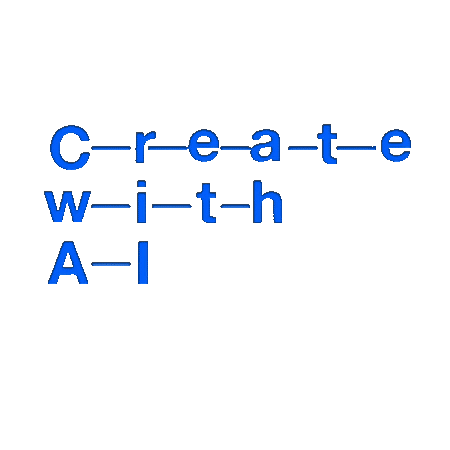MusicLM: テキストから音楽を生成するモデル
Agostinelli, Andrea, Timo I. Denk, Zalán Borsos, Jesse Engel, Mauro Verzetti, Antoine Caillon, Qingqing Huang, et al. 2023. “MusicLM: Generating Music From Text.”
arXiv [cs.SD]
. arXiv. http://arxiv.org/abs/2301.11325.
“a calming violin melody backed by a distorted guitar riff” といったテキストから音楽がサウンドファイルとして生成される. Stable Diffusionの音楽版
2023

Overview
- テキストから音楽を生成するモデル
- “a calming violin melody backed by a distorted guitar riff” といったテキストから音楽が生成される
- 24kH サンプリングレート
- プロのミュージシャンの手による、5500のテキストと音楽のペアからなるデータセット MusicCapsを公開
Abstract
We introduce MusicLM, a model for generating high-fidelity music from text descriptions such as “a calming violin melody backed by a distorted guitar riff ”. MusicLM casts the process of conditional music generation as a hierarchical sequence- to-sequence modeling task, and it generates music at 24 kHz that remains consistent over several mi- nutes. Our experiments show that MusicLM out- performs previous systems both in audio quality and adherence to the text descriptions. Moreover, we demonstrate that MusicLM can be conditioned on both text and a melody in that it can transform whistled and hummed melodies according to the style described in a text caption. To support future research, we publicly release MusicCaps, a dataset composed of 5.5k music-text pairs, with rich text descriptions provided by human experts. google-research.github.io/seanet/musiclm/examples
- 生成モデルのベースになっているのは、音をローレベル(シグナルレベル acoustic tokens)、ハイレベル(もうちょっと構造的な情報 semantic tokens)な離散的な情報(トークン)の階層的なシーケンスとして扱うことで合成するAudioLMの研究。
- acoustic token: SoundStream を利用 (24kHz mono → 50Hzのトークン列に圧縮)
- semantic token: w2v-BERT (25Hzのトークン列)
- それぞれ事前学習して重みを固定する
- 音楽とテキストのペアは画像とテキストのペアに比べて圧倒的に少ない → テキストと音楽を同じ潜在空間にマッピング(embedding)するMuLanと呼ばれるモデルを利用。
- CLIPモデルの画像が音楽に置き換わったようなモデル
- テキストと音楽の関係が割とルースに関連しているだけでも学習できるのが特徴
- YouTubeのミュージックビデオのタイトルやタグ、説明文、そのビデオが含まれているプレイリストのタイトルを音楽に紐づくテキストとして扱った。
- MuLanは10秒の音をembedする → 音楽の長いシーケンスを処理することが直接はできない → 1秒ずつずらして(stride= 1秒)、10秒ごとにembedしたものを平均して、その楽曲のembeddingとする。
- RVQ(residual vector quantization)を使って 12のトークンで表現
- こちらも事前に学習しておく

Architecture
- 生成は二段階
- MuLanのトークンから → Semanticトークンを予測するモデル
- MuLanの出力のトークン + 予測されたSemantic トークン から Acoustic トークンを予測するモデル
- この二つのモデルをそれぞれデコーダーだけのTransformerモデルとして学習
- 学習時には以下の二つが近くなるように学習
- 学習データの音楽をMuLanに入力 して得られるMuLanのトークンの入力として、上の二つのモデルを通して得られたAcousticトークン
- 入力の音楽を SoundStreamのエンコーダを通して得られる Acousticトークン
- 学習 - 生成モデルの学習時には音楽だけがあればいい。テキストはいらない。
- Free Music Archiveの曲を利用 (500万曲 28万時間分の音楽)
- MuLanで音楽をembedして得られるMuLanのトークンを入力とする。
- 推論時
- 入力をMuLanでテキストをembedして得られるトークンに差し替える

Results
- 生成された音楽のサンプル
MusicLM
Andrea Agostinelli, Timo I. Denk, Zalán Borsos, Jesse Engel, Mauro Verzetti, Antoine Caillon, Qingqing Huang, Aren Jansen, Adam Roberts, Marco Tagliasacchi, Matt Sharifi, Neil Zeghidour, Christian Frank Google Research Abstract We introduce MusicLM, a model generating high-fidelity music from text descriptions such as"a calming violin melody backed by a distorted guitar riff".
google-research.github.io
- RiffusionやMubertよりも音質、テキストとの整合性どちらにおいても上回った。
- 定量評価
- Frechet Audio Distance
- KL Divergence
- 生成された音楽を音の識別モデルにかけて出てきたラベルの分布とリファレンスになる音楽(同じジャンルの音楽?)のそれとのKL Divergenceをとる
- MuLan Cycle Consistency (MCC)
- 生成された音楽をMulanでembedし直して、元になったプロンプトのtextをembedしたベクトルとのcosine similarityをとる
- Pair-wise Wins
- 人に聞いてもらった評価. 二つ曲のペアを使ってどちらが良いかを聞く→勝った回数

- さらに… プロのミュージシャンに音楽(AudioSetから抽出)を聴いてテキストで表現してもらったデータとの比較も → このデータはMusicCapsとして公開。
- 10秒の曲を聴いてもらって、4つの文くらいで音楽の内容と音楽のスタイルを記述してもらう
- データのサンプル
- “This folk song features a male voice singing the main melody in an emotional mood. This is accompanied by an accordion playing fills in the background. A violin plays a droning melody. There is no percussion in this song. This song can be played at a Central Asian classical concert.”
- “This is a live recording of a keyboardist playing a twelve bar blues progression on an electric keyboard. The player adds embellishments between chord changes and the piece sounds groovy, bluesy and soulful.”
MusicCaps
5.5k high-quality music captions written by musicians
www.kaggle.com

- 流石にこの人が作った音楽に人がテキストをつけたデータと比較すると負けてしまう。

- メロディーを入力してその続きをそのスタイルで生成することも可能
- 学習データの断片を入力、その後を生成させたところ、生成された音楽は学習データの中の元楽曲とは全然違うものになったことが確認された ←丸暗記されてるわけではない
- リスク
- 学習データの偏り - 特定のジャンル (特に西洋の音楽)が多い
- 逆に文化の盗用 (cultural appropriation)だと受け止められるリスクもある
Further Thoughts
論文を読んで考えた個人的感想
- MuLanを使うことで、音楽とテキストのペアを学習データとして大量に集めることなく、生成モデルを学習できたというところが目の付け所。
- ミュージシャンにとって使えるものになるのだろうか? 本当にテキストで音楽生成するのが一番創造的なやり方なのか?
- 言葉の写実性に縛られてしまうのではないか?
- 音楽は特に抽象的な表現なだけに、モデルのアウトプットを無自覚に受け入れてしまいがち?
- モデルを公開する予定がないというのが残念
Links
- 生成された音楽のサンプル
MusicLM
Andrea Agostinelli, Timo I. Denk, Zalán Borsos, Jesse Engel, Mauro Verzetti, Antoine Caillon, Qingqing Huang, Aren Jansen, Adam Roberts, Marco Tagliasacchi, Matt Sharifi, Neil Zeghidour, Christian Frank Google Research Abstract We introduce MusicLM, a model generating high-fidelity music from text descriptions such as"a calming violin melody backed by a distorted guitar riff".
google-research.github.io
- MusicCaps - プロのミュージシャンによってアノテーションづけされた音楽とテキストのデータセット
MusicCaps
5.5k high-quality music captions written by musicians
www.kaggle.com

次に読む
- Borsos, Zalán, Raphaël Marinier, Damien Vincent, Eugene Kharitonov, Olivier Pietquin, Matt Sharifi, Olivier Teboul, David Grangier, Marco Tagliasacchi, and Neil Zeghidour. 2022. “AudioLM: A Language Modeling Approach to Audio Generation.” arXiv [cs.SD] . arXiv. http://arxiv.org/abs/2209.03143.
- Huang, Qingqing, Aren Jansen, Joonseok Lee, Ravi Ganti, Judith Yue Li, and Daniel P. W. Ellis. 2022. “MuLan: A Joint Embedding of Music Audio and Natural Language.” arXiv [eess.AS]
. arXiv. http://arxiv.org/abs/2208.12415. - Zeghidour, Neil, Alejandro Luebs, Ahmed Omran, Jan Skoglund, and Marco Tagliasacchi. 2021. “SoundStream: An End-to-End Neural Audio Codec.” arXiv [cs.SD]
. arXiv. http://arxiv.org/abs/2107.03312. - Chung, Y. A., Y. Zhang, W. Han, and C. C. Chiu. 2021. “W2v-Bert: Combining Contrastive Learning and Masked Language Modeling for Self-Supervised Speech Pre-Training.” 2021 IEEE Automatic. https://ieeexplore.ieee.org/abstract/document/9688253/.
